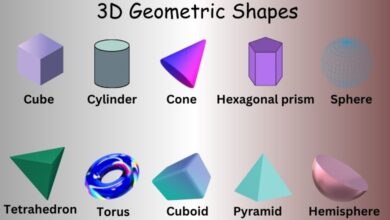
“Building Your Marketing Vocabulary: Essential Phrases for ESL Students”
Key Marketing Phrases for ESL Students
This compilation of marketing terms aims to provide ESL students with a comprehensive resource to enhance their grasp of specialized English vocabulary for marketing-related subjects.
In various professional sectors, educators often lack precise English jargon specific to particular industries. Consequently, a compilation of fundamental vocabulary aids educators in furnishing appropriate materials to students with specific English language requirements, particularly those pursuing English for Specific Purposes courses.
Here is the list of marketing vocabulary and phrases, along with their respective meanings:
-
To act on the price:
Taking action or making adjustments based on the price of a product or service to influence sales or competitiveness.
Example:
The company decided to act on the price by offering a limited-time discount to attract more customers.
-
After-sales activities:
Actions or services provided to customers after they have made a purchase.
Example: The company’s after-sales activities include providing technical support and warranty services.
-
After-sales service:
Support or assistance offered to customers after they have bought a product or service.
Example: The after-sales service team promptly addressed the customer’s concerns and provided a replacement for the faulty item.
-
Assisted brand identification:
When a salesperson or marketing effort helps customers recognize a brand.
Example:
The store’s helpful staff played a significant role in assisted brand identification, leading to higher sales for the company.
-
To be competitive:
Having the ability to compete effectively in the market with other businesses.
Example: The company invests in continuous research and development to be competitive in the industry.
-
To be out of stock:
When a product is not available for purchase because it is temporarily unavailable.
Example: The popular product sold out quickly, leaving the shelves empty and the store out of stock.
-
Behavior pattern:
The consistent way people behave or act in certain situations.
Example: The marketing team analyzed the behavior patterns of their target audience to tailor their advertising strategy.
-
Blind product test:
A research method where consumers evaluate products without knowing the brand or manufacturer.
Example: The company conducted a blind product test to gather unbiased feedback from potential customers.
-
Brand equity:
The value and perception associated with a brand’s name and reputation.
Example: The brand’s strong commitment to quality and customer service contributed to its high brand equity.
-
Brand extension:
Introducing a new product under an existing brand to leverage its reputation and recognition.
Example: The company successfully launched a line of clothing as a brand extension of their popular accessories line.
-
Brand loyalty:
When customers repeatedly choose a specific brand over others due to a strong emotional connection.
Example: The brand’s exceptional customer service has earned them a loyal customer base.
-
Brand positioning:
How a brand is perceived compared to its competitors in the minds of consumers.
Example: The company’s brand positioning as a luxury product ensures premium pricing and exclusivity.
-
Brand preference:
When consumers favor a specific brand over others in a given product category.
Example: The survey revealed that brand preference heavily influences purchasing decisions.
-
Brand range:
The variety of products offered under a particular brand.
Example: The brand’s diverse product range caters to different customer needs and preferences.
-
Brand strategy:
A plan outlining how a company intends to build and manage its brand identity.
Example: The brand strategy includes social media campaigns and influencer partnerships to increase brand awareness.
-
Brand switching:
When a customer switches from buying one brand to another.
Example: The aggressive marketing efforts of the competitor led to some brand switching among our customers.
-
Brand value:
The monetary and intangible worth of a brand, considering its recognition and reputation.
Example: The company’s merger resulted in an increase in brand value due to the combined resources and market reach.
-
Branded product:
A product carrying the name and identity of a specific brand.
Example: The company’s branded products are known for their premium quality and distinctive packaging.
-
Buy for fun:
Purchasing items primarily for enjoyment or pleasure rather than necessity.
Example: The amusement park sells various souvenirs that visitors buy for fun to remember their experience.
-
Buying frequency:
How often a customer makes a purchase.
Example: The company’s loyalty program encourages customers to increase their buying frequency by offering rewards.
-
Buying habit:
A repetitive way of purchasing products or services by consumers.
Example: The marketing team analyzed the buying habits of their target audience to create personalized promotions.
-
Buying motivation:
The reasons that drive consumers to make a purchase.
Example: Understanding the buying motivations of customers helps tailor marketing messages effectively.
-
Call planning:
The process of preparing and organizing sales calls to maximize efficiency and effectiveness.
Example: The sales team spent time on call planning to ensure they were well-prepared for each customer interaction.
-
Cannibalization:
When the sales of a new product reduce the sales of an existing product within the same company.
Example: The company decided not to launch the new product to avoid cannibalization of their current bestseller.
-
Cartel price:
An agreement between companies to set a fixed price for a product or service to avoid competition.
Example: The government imposed heavy fines on the companies involved in cartel pricing.
-
Case history:
A detailed account of the development and success of a product or marketing campaign.
Example: The marketing team presented a case history showcasing the positive impact of their previous campaign.
-
Cash and carry:
A business model where customers pay in cash and immediately take the purchased items with them.
Example: The wholesale store operates on a cash and carry basis, catering to businesses with immediate needs.
Certificate of guarantee:
A document provided by the manufacturer or seller assuring the quality and warranty of a product.
Example: The customer received a certificate of guarantee for the electronic device purchased, covering any defects for one year.
-
Chain of retailers:
A series of interconnected retail stores that are owned and operated by the same company.
Example: The company expanded its presence through a chain of retailers, ensuring a wider distribution of its products.
-
Cluster analysis:
A statistical method used to group data or consumers based on similarities or common traits.
Example: The marketing team conducted cluster analysis to identify specific consumer segments with distinct preferences.
-
Commercial strategy:
A plan outlining how a company aims to achieve its marketing and sales objectives.
Example: The company’s commercial strategy focuses on expanding into new international markets.
-
Competition:
The rivalry among businesses within the same industry, competing for market share and customer attention. Example: The competition in the smartphone industry is fierce, with companies constantly launching new models.
-
Competitive advantage:
A unique attribute or factor that gives a company an edge over its competitors.
Example: The company’s superior customer service is their competitive advantage, leading to high customer retention.
-
Competitive products:
Similar products or services offered by different companies competing for consumer choice.
Example: The marketing team analyzed the features and prices of competitive products to determine their market positioning.
-
Competitiveness:
The ability of a company to compete effectively in the market.
Example: The company’s emphasis on innovation and cost efficiency enhances its competitiveness.
-
Competitor:
A company or business competing in the same market for the same target audience.
Example: The competitor launched a new advertising campaign to challenge our market share.
-
Competitor profile:
An analysis of a competitor’s strengths, weaknesses, and strategies to inform business decisions.
Example: The marketing team created a comprehensive competitor profile to identify potential threats and opportunities.
-
Consumer association:
A group or organization that advocates for the rights and interests of consumers.
Example: The consumer association raised concerns about the safety standards of certain products in the market.
-
Consumer panel:
A group of individuals who provide feedback and opinions on products and services.
Example: The company regularly gathers insights from their consumer panel to improve product offerings.
-
Consumer survey:
A research method involving questionnaires or interviews to collect data about consumers’ preferences and behaviors.
Example: The marketing team conducted a consumer survey to understand the factors influencing purchase decisions.
finally, this comprehensive marketing vocabulary reference sheet serves as a valuable tool for ESL students aiming to enhance their understanding of marketing-related terms and phrases. Marketing, being a dynamic and competitive field, demands a firm grasp of specialized language to effectively communicate ideas and strategies. By familiarizing themselves with this vocabulary, learners can gain a deeper insight into the principles and practices of marketing.
Check out other articles:





